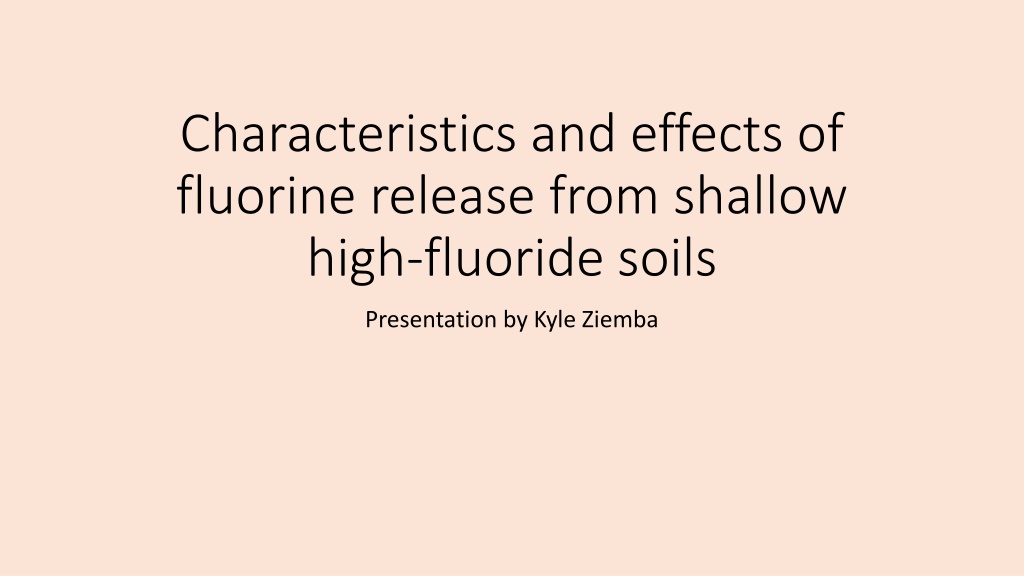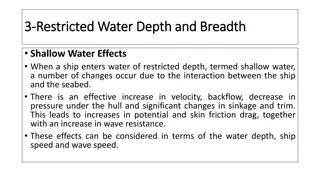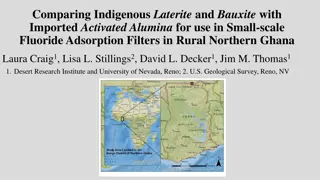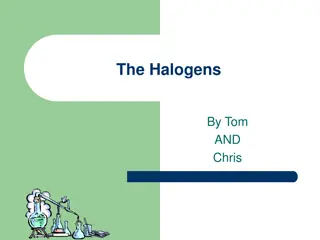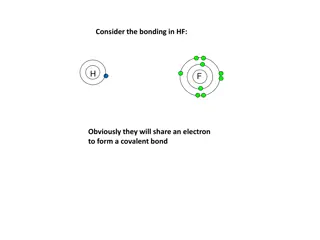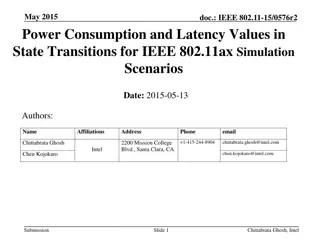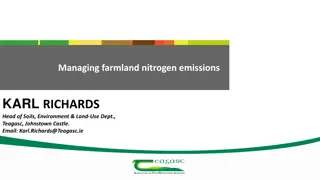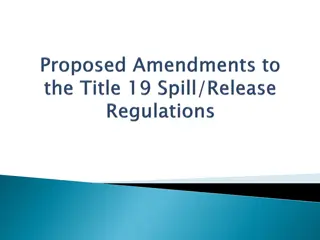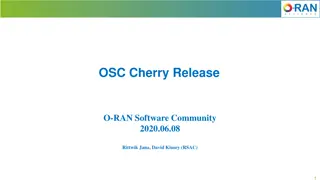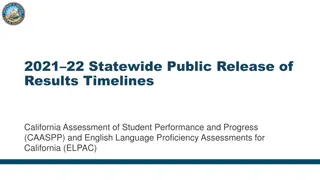Characteristics and Effects of Fluorine Release from Shallow High-Fluoride Soils
Shallow groundwater contaminated with high levels of fluorine poses a significant risk of fluorosis in areas like Gaomi, China. This presentation by Kyle Ziemba highlights the repercussions of fluorine release from soil into aquifers, leading to dental and skeletal damage. Experiments conducted in Gaomi involved soil samples to measure the equilibrium of fluorine in soil and water. Results showed the desorption of fluorine when the rate exceeded absorption. Additional leaching experiments and measurements were conducted to assess F-concentrations, pH, HCO3-concentration, Ca2+, and Mg2+ levels.
Download Presentation

Please find below an Image/Link to download the presentation.
The content on the website is provided AS IS for your information and personal use only. It may not be sold, licensed, or shared on other websites without obtaining consent from the author. Download presentation by click this link. If you encounter any issues during the download, it is possible that the publisher has removed the file from their server.
E N D
Presentation Transcript
Characteristics and effects of fluorine release from shallow high-fluoride soils Presentation by Kyle Ziemba
The Problem Shallow groundwater is the main drinking source for humans If there are high levels of fluorine in this shallow groundwater, the drinking water endemic fluorosis could affect the area Fluorosis mainly damages dental and skeletal structures With the decreasing groundwater level, leaching from rainfall will release large amounts of fluorine into the deep level aquifers
Gaomi, China This area of China has been affected by fluorosis over the past two decades Due to agriculture, local industry, and increased standard of living, the groundwater level has decreased The source of the fluorine is not only chemical fertilizer, but its own fluorine-bearing minerals
Soil Fluorine Release Experiment Five soil samples collected from Gaomi, China The soil samples were air dried and sifted through 1 mm sieve Twelve small 10 g samples were collected from each of the soil samples and placed into a bottle with 100 ml of distilled water The bottles were put on a horizontal shaker at 200 rpm and the concentrations of fluorine ions was measured at specific time intervals The fluorine in the soil and water are in equilibrium, if the desorption rate is higher than absorption, the fluorine is released
Soil Column Leaching Experiment The samples were set up as they were when collected in the field The soil column was saturated with distilled water The leachates were collected from each outlet according to specific time intervals This experiment took place over 1046 hours.
Measurements In both experiments, the F-concentrations were found by using an ion selective electrode The pH of the leachate was measured by pH meters The HCO3-concentration was measured by titration The Ca2+ and Mg2+ concentrations were measured by using an atomic absorption spectrophotometer
Results for Soil Fluorine Release Experiment During the experiment, the desorption and absorption of fluorine alternated between the soil and distilled water, but ultimately the fluorine remained desorbed and released from the soil. The amount of fluorine released increased from T1-T5 or increased with depth of soil from shallow to deep. In this study, the deeper soils contained higher levels of calcareous minerals, which promotes more desorption of the fluorine
Results for Soil Column Leaching Experiment The F-concentration in the leachate from the upper soils continuously decreased while that from the lower soils increased relatively.
Conclusions Fluorine release from shallow high-fluoride soils is a potential threat to groundwater safety The release of fluorine is a slow process, and occurs in the direction of runoff The increase in fluorine content of the shallow soil from top to bottom is a result of long-term leaching by rainfall With increasing leaching time, the rate of release of fluorine and other ions decreased, and the pH value increased
References Shi, M., Gao, Z., Feng, J., Zhang, H., Cui, Y., Fang, S., & Liu, J. (2019). Characteristics and effects of fluorine release from shallow high- fluoride soils. Environmental Earth Sciences, 78(20). doi: 10.1007/s12665-019-8618-0
